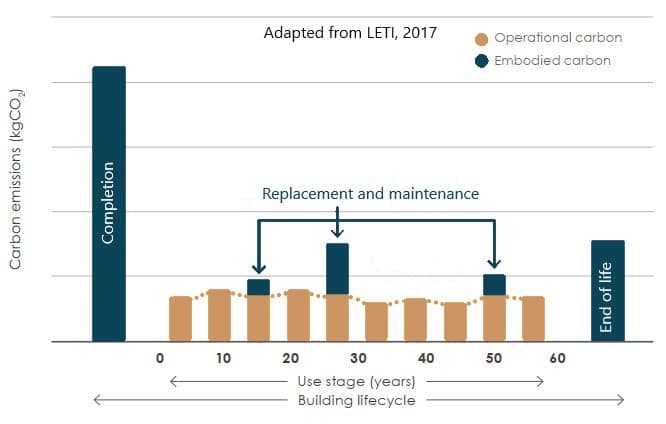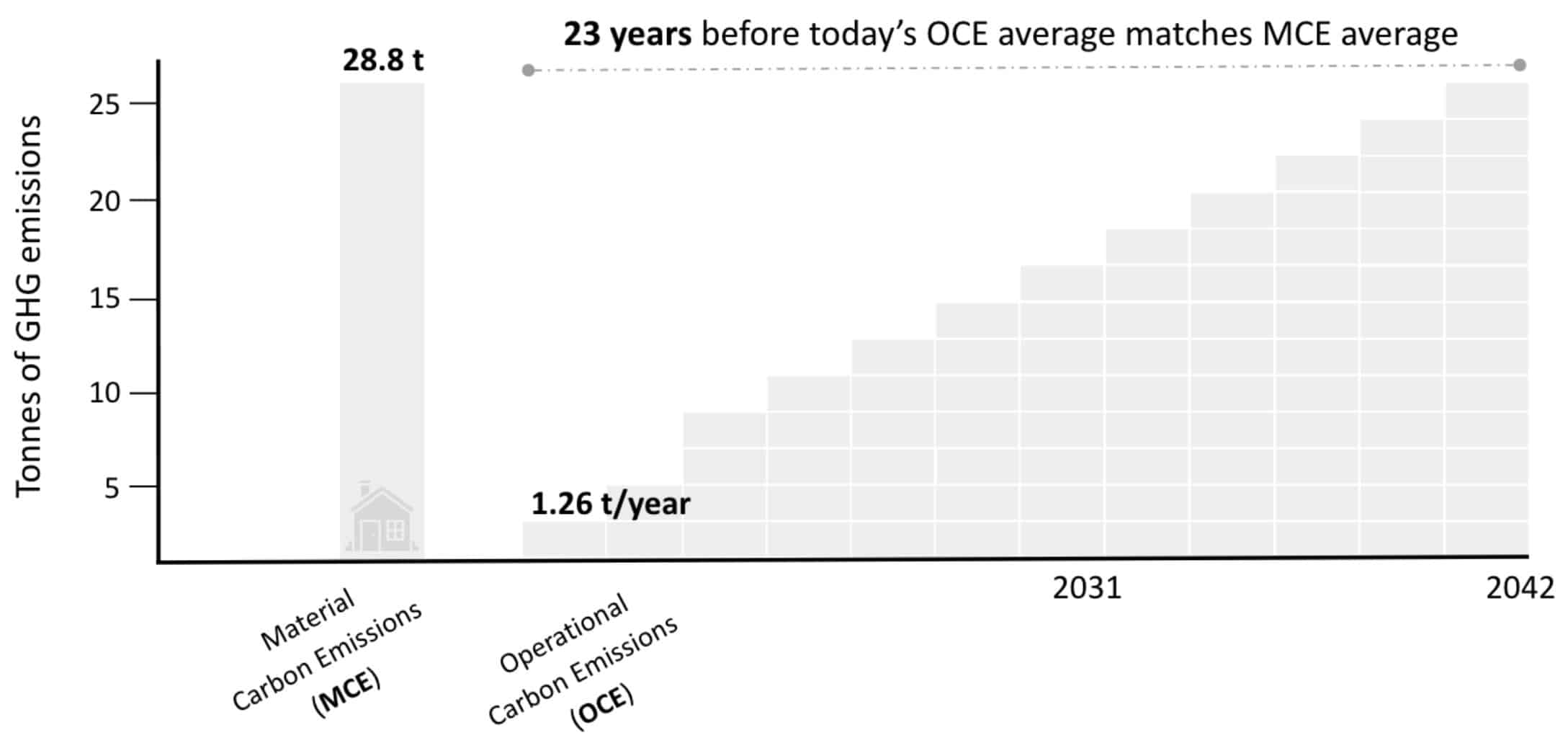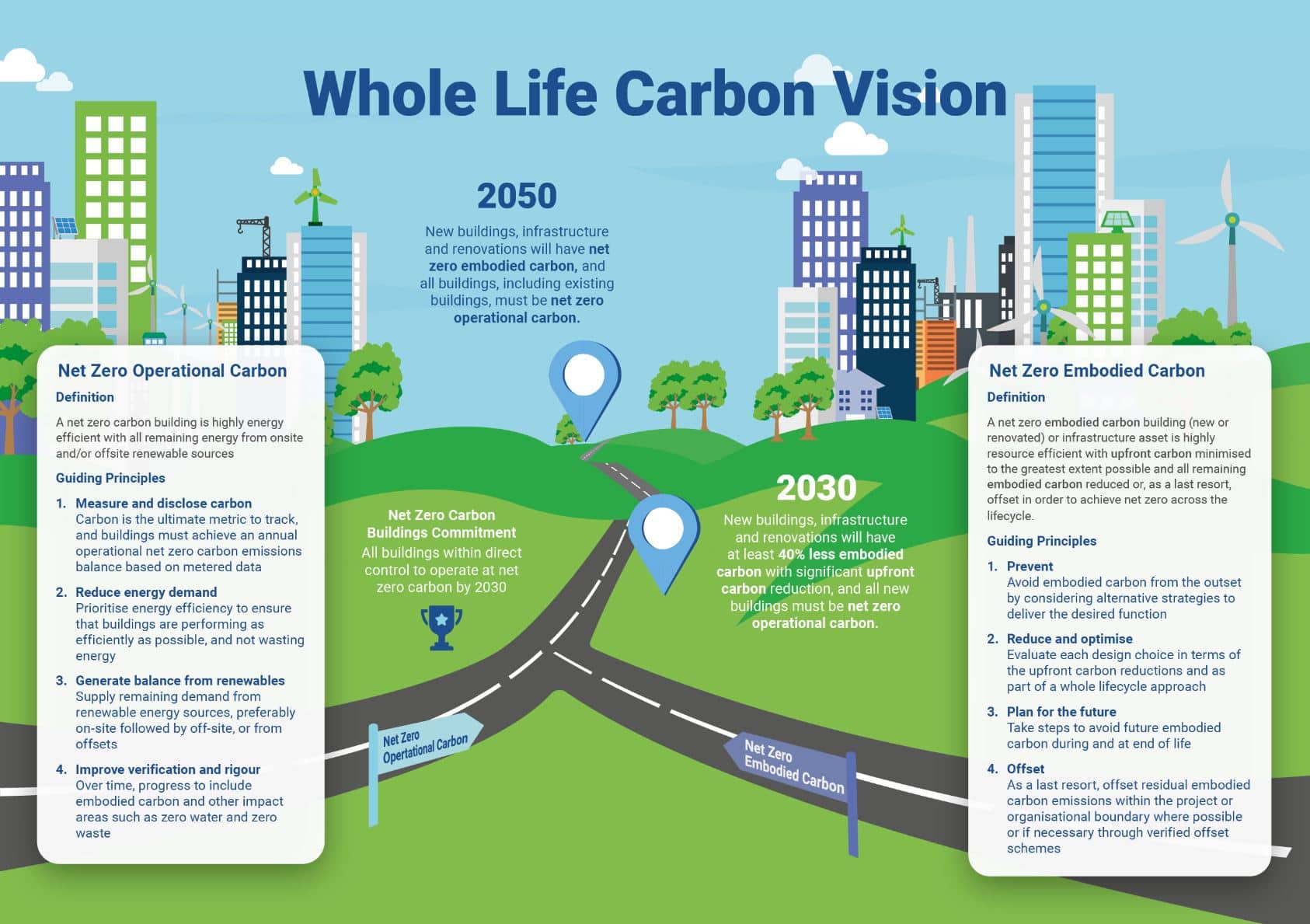
Energy Codes have played a pivotal role in reducing operational emissions from our buildings. Operational emissions are what we talk about when we talk about energy efficiency.
Embodied carbon or embodied emissions, as we prefer to call them, still remain nebulous (pun totally intended) for many.
Here is the business case for reducing embodied emissions in our buildings.
The difference between operational and embodied emissions
Understanding the difference between operational and embodied carbon is crucial when thinking about GHG reductions for buildings.
Operational emissions are the emissions released from the ongoing operation of the building. Sources will include heating and cooling, ventilation, lighting, and other electronic appliances.
Operational emissions are calculated with energy modelling.
Embodied emissions are the emissions released from the extraction, manufacturing, transportation, installation, and decommissioning of building materials. Between 70% – 90% of embodied emissions happen before the building is occupied.
Embodied carbon is calculated with a Life Cycle Assessment (LCA).
Why embodied carbon matters?
Currently, in BC, embodied carbon represents between 30% – 45% of the total emissions of a building.
As we build more energy-efficient buildings with low-carbon fuels, embodied emissions become a larger portion of their total environmental footprint. This is especially true since the materials used to build high-performance homes are traditionally high-carbon materials. Inconvenient, don’t you think?
A study done by the City of Nelson shows that, on average, it can take up to 23 years for cumulative operational emissions to reach the embodied emissions from the materials. For the most emissive homes in the study, it could take between 90-100 years!
Unlike operational emissions, which can be reduced over time with energy-efficient retrofits and the use of renewable energy, embodied emissions are locked in place as soon as a house is built.
We need to get a grip on embodied emissions now if we want to meet BC’s climate target to reduce greenhouse gas emissions by 80% by 2050.
A vision to net-zero energy and net-zero carbon buildings
As BC communities are rapidly growing and facing large development proposals, we need to include strategies to reduce embodied carbon and operational emissions, at once.
Here is an infographic from the World Green Building Council that we really like.
In 2050, all new buildings, infrastructure, and renovations will have net zero embodied carbon, and all buildings, including existing buildings, will have net zero operational carbon.
How do we get there you ask? What does that mean?
A net Zero operational carbon building is highly energy-efficient, so uses very little energy to function, and all remaining energy from onsite or offsite is from renewable sources. To be honest, we’re not so far off. We’ve seen projects reach that standard.
Now, those buildings will also need to be net-zero embodied carbon. That means, the upfront embodied carbon is minimized as much as possible, and all other embodied carbon is reduced or, at last resort, offset, in order to achieve net zero across the life cycle.
We want to stress the words at last resort, as we know offsetting and carbon capture become hot topics and are sometimes described as the solution to climate change. In reality, we should make all efforts possible to first reduce our emissions before offsetting or capturing them.
Poor embodied emissions choices can easily negate all operational emissions reductions that could be achieved by 2030. How are you planning on reducing the impact of your next project?
Contact us to revolutionize the buildings and construction sector towards a net-zero future, and tackle embodied emissions.



